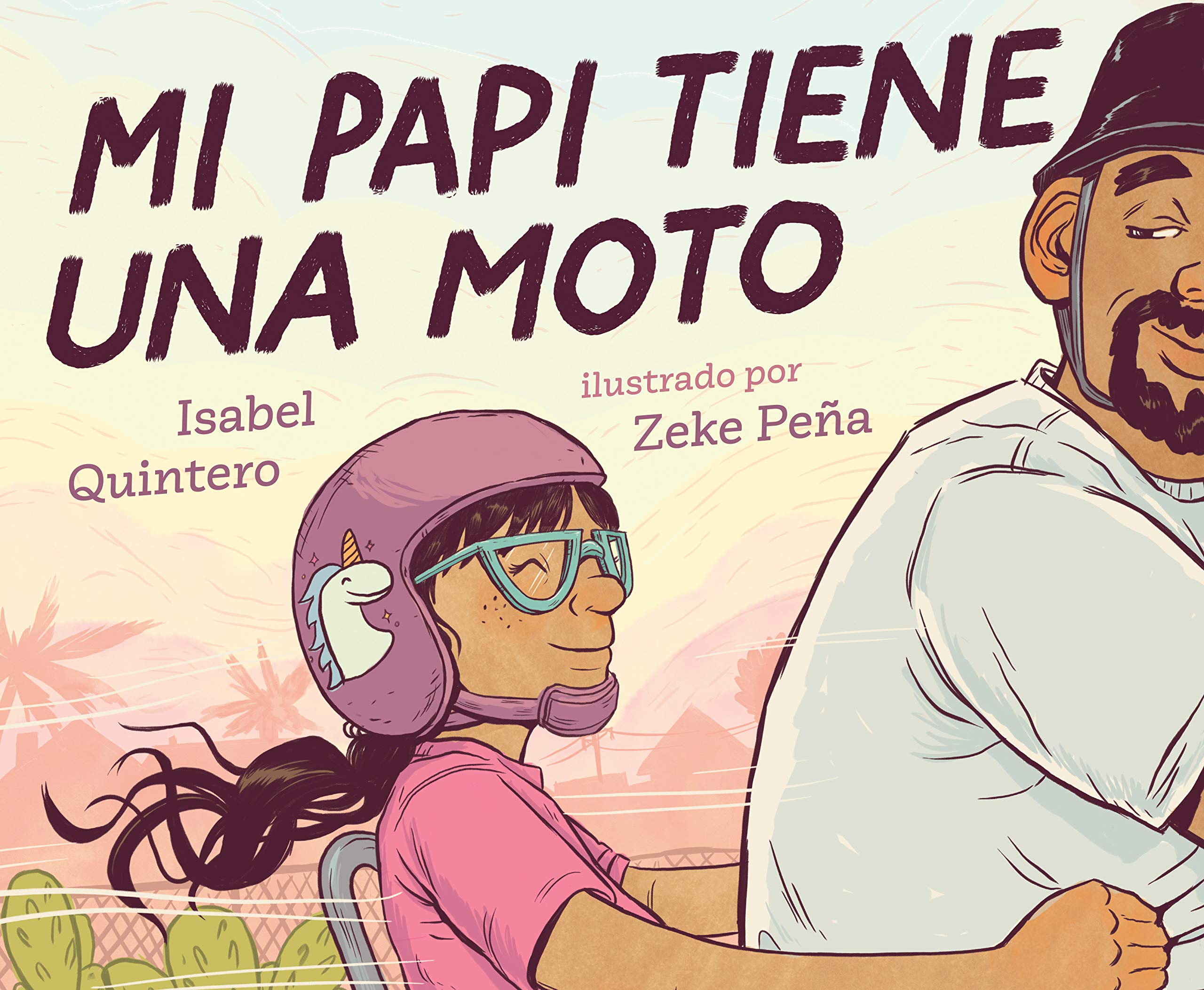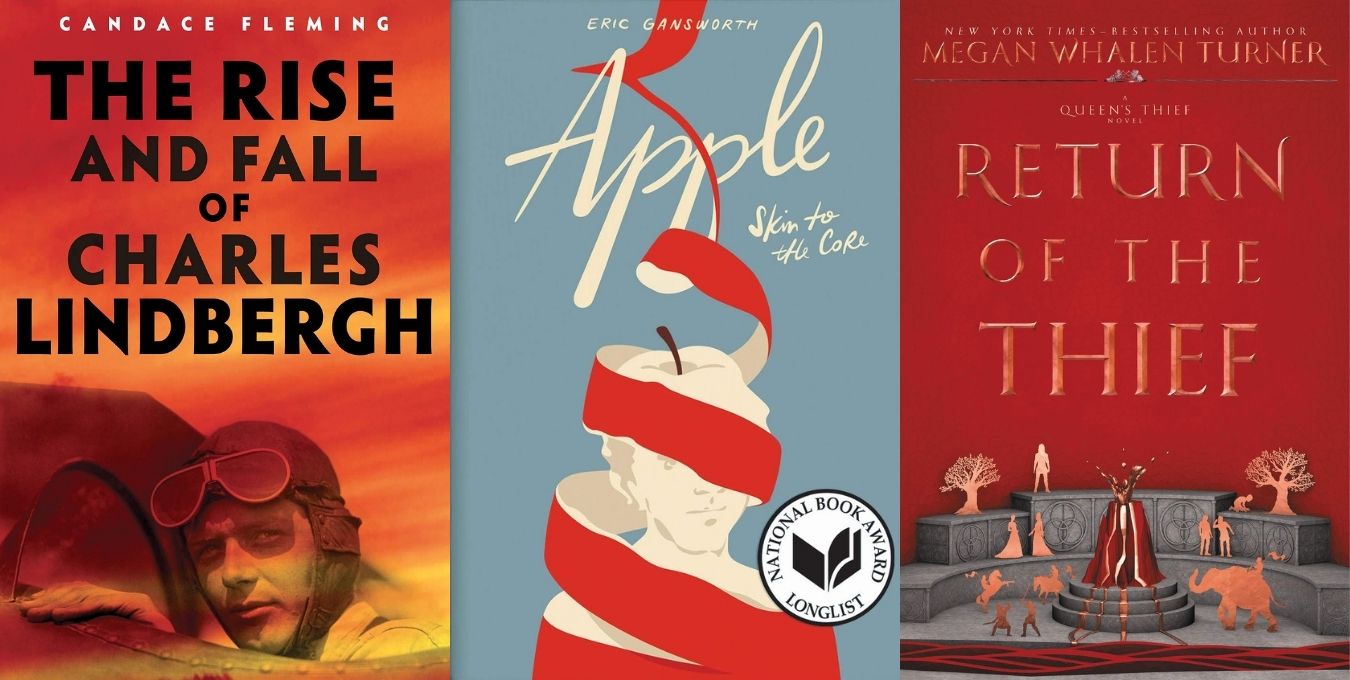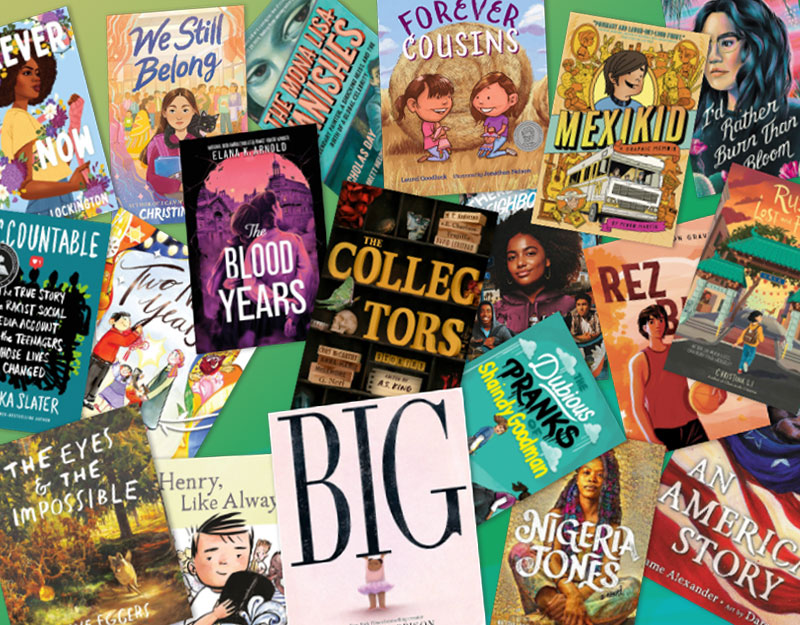Healing and Hope through Storytelling: The 2021 Newbery and APALA Award Winner When You Trap a Tiger

When You Trap a Tiger
Written by Tae Keller
Published by Random House, 2020
ISBN #978-1-5247-1570-0
Grades 3 and up
Book Review
“If it were your story, if a tiger was chasing you . . . would you run or would you . . . face it?” (p. 142). Hypothetical as this question seems, for 11-year old Lily, it is actually a matter of life or death, though not as one might expect. Throughout her childhood, Lily thought the tiger in question was simply a creature from her halmoni’s (grandmother’s) Korean folk tales. Lately, though, Lily has been seeing that tiger–on the road to Halmoni’s house, between the shelves at the library, and even in Halmoni’s house. When Halmoni falls gravely ill, Lily learns that Halmoni stole something from the tigers long ago, something that must be returned in exchange for healing her grandmother. Part magical realism, part folktale, part contemporary realistic fiction, Tae Keller’s Newbery and APALA Award winning novel weaves a coming-of-age tale that is heartrending, haunting, and hopeful.As Lily navigates the situation, she learns how hope and history are intertwined, how fact and fiction can be blurred, and how identity is fragile, fluid, and expansive. Keller’s skillful blend of storytelling genres and language makes this a novel that can straddle multiple ELA units and curricular objectives around narrative storytelling, family and friendship, and folklore, but it is the heart of Lily’s story that will resonate with readers across time.
Teaching Ideas and Invitations
Note to our Readers: These ideas are not meant to be prescriptive. Choose one. Choose more. It’s up to you. Some ideas are bigger and will take a number of days to complete. Some are shorter. You can also choose to complete one part of a teaching idea, but not the whole thing. It’s up to you!
The Art of Storytelling. From the time they were little, Lily and her sister Sam were mesmerized by Halmoni’s stories and begged her to tell them more stories. Storytelling, however, is not as easy as it seems, though, and skilled storytellers will explain how they study and practice it as a craft. Have students explore and practice the art of storytelling. They might tell a favorite fairy tale, family story, or a story they’ve written themselves. To help them tell their story, use a graphic organizer that helps them plot out the structure, such as problem-action-solution or challenge-strategy-ending. You might also refer to storytelling resources like Pete Seeger’s Storytelling Book, NPR’s Story Corps, the National Storytelling Network, or Bill Gordh’s storyteller website (see Further Explorations section below).
Family Stories and Folklore. The stories and folklore that Halmoni tells shape so much of Lily’s understanding of the world and the events of the novel, so much that Lily uses them to find peace and hope for the future. What cultural and generational stories circulate within your students’ families? Invite students to share them via storytelling, or invite families and community members to tell the stories to your class. Encourage students to write the stories down as well, or storytell them via multimedia tools, to share with the rest of the school and community. For help in preparing students to engage in the art of storytelling, visit some of the websites listed in Further Explorations below.
Text Set: Influential and Strong Grandparents. Halmoni’s vivacity and influence is felt strongly not just by her family, but by many in the town who hold a special place in their heart for her. In fact, strong grandparent characters are a familiar trope in children’s and young adult literature. Seek the help of your school or local librarian to construct a text set that spotlights strong grandparents. Share these books with students to compare and contrast the characters. In what ways do the grandparents influence the protagonists in each book? In what ways are they similar or different from each other? From their children and grandchildren? Some novels you might include are Hello Universe, by Erin Entrada Kelly; The Harlem Charade, by Natasha Tarpley; Felix Yz, by Lisa Bunker; Indian No More, by Charlene Willing McManis with Traci Sorell; and Goodbye, Stranger, by Rebecca Stead. Picture books with strong grandparent characters include Last Stop on Market Street, by Matt de la Peña; My Grandma and Me, by Mina Javaherbin; and Our Favorite Day, by Joowon Oh.
Losing a Grandparent. When You Trap a Tiger tenderly portrays the loss that many children experience when a beloved grandparent passes away. For some students, especially due to the COVID-19 pandemic, this may be a devastatingly traumatic experience. Support students to share their personal responses and connections to When You Trap a Tiger, making sure to collaborate with your school’s support team (i.e., guidance counselor, school psychologist, school social worker, etc.) and that the classroom is a safe and caring space for them to do so. If the class is ready and willing to explore this concept further, share some other books that deal with grief and loss of a loved one. Our Classroom Bookshelf entry on grief and loss provides links to helpful resources.
Shattering and Expanding Identity. Throughout the novel, Lily, Sam, and even Halmoni try to define who they are, attempting to shape their identity through categories and rules. Lily’s reflection at the end of the novel shows the misconceptions many of us have that identity has to be something strictly, singularly, and permanently defined: “I’ve been doing that, pushing back the edges of me—trying to find the borders—and I’m realizing that I’m so much more than I thought.”. Have them work in partners or small groups to identify lines and examples in the novel where Lily, Sam, and other characters show they are more than who they thought (e.g., moments when Lily is not a QAG (quiet Asian girl), when Sam is not a rebellious teen). Encourage your students to think about how they are so much more than the identity they think they hold or that they have been told they are. You might support their thinking with an anchor chart or a graphic organizer. Sometimes it takes facing adversity to realize this; other times, it doesn’t and we are able to expand our identity through profound learning experiences. Extend these conversations into multimodal response options where students can share their reflections via poetry, music, visual art, drama, etc.
Creating Folklore. In her Author’s Note, Tae Keller explains that she created the version of the folktale about the tiger and two siblings at the center of this novel, but she based it on the many versions of the story that circulate in Korean folklore. As a class, pick a popular folktale for students to study and use to create their own version. Guide them to identify the elements of the story that should remain the same, such as certain characters, plot events, and themes, and those elements they want to change. Encourage them to reflect on the questions they have after reading the existing versions of the story, just as Tae Keller did, and to try to answer them in their new versions. Although Keller doesn’t use source notes to document her references, you might want to teach your students how to include them at the back of their tales to show which parts of their stories come from previously known versions (though this may not be easy for everyone since folklore is often passed orally from one generation to another). Share those versions with other classes and families, either as written or orally told tales.
Research for Writing Contemporary Realistic Fiction. Tae Keller also uses her Author’s Note to describe the lengthy and comprehensive process she undertook to research the history of Korea and her own family. Use this note to begin discussions and inquiries with your students about how writers don’t only use research for creating nonfiction or historical fiction. What is the goal of conducting research to write contemporary realistic fiction? How is the process similar and different from conducting research to write in other genres? Invite your students to write a contemporary realistic fiction piece that requires research to construct a more vivid, accurate, and layered depiction of characters, setting, plot, and other literary elements.
Narrative Hybrid Genre Exploration. When You Trap a Tiger fuses narrative elements of contemporary realistic fiction, magical realism, and folktale. Have students identify the distinct characteristics of each genre, noting archetypes and essential elements of plot, setting, and format. Then have students analyze how When You Trap a Tiger blends these genres. Referring to some of the links and tools listed below in Further Explorations, invite students to create their own narratives that merge various genres into a single story. Some examples of novels that do this include Echo, by Pam Muñoz Ryan; The Dreamer, by Pam Muñoz Ryan; Wonderstruck, by Brian Selznick, and Moon Over Manifest, by Clare Vanderpool.
Family Recipes. Making Halmoni’s rice cakes becomes a critical point of tension in the novel. Both Lily and her mother attempt to make them without knowing exactly how. Ask students to think about food that is important to their families or communities. Do they have a special recipe that gets passed on or that they hope to learn? What are the stories behind those recipes? Invite students to interview family and community members about such recipes. Then have students share what they learned in the modality and genre that best showcases their strengths as learners, such as an informational book, poetry, song, wordless picture book, or oral storytelling. You might want to share Fry Bread, by Kevin Nobel Maillard; Chef Roy Choi and the Street Food Remix, by Jacqueline Briggs Martin and June Jo Lee; Octopus Stew, by Eric Velasquez; Hot Hot Roti for Dada-ji, by Farhana Zia; and Bee-Bim Bop, by Lin as mentor texts. Invite families and community members to bring in the featured food for a class potluck and publishing party about those recipes.
The Newbery Medal. Learn more about the Newbery Medal award at the ALA website. Gather a collection of Newbery Medal winners from past years and invite children to browse them and make observations. What patterns do they see in the books that have won in recent years? What changes do they see? Have students construct a list of qualities of When You Trap a Tiger that they believe led to the novel being chosen as the award winner. Then have students review the actual criteria for the Newbery Medal. Do they agree that When You Trap a Tiger deserved the Newbery Medal? Why or why not? Have students apply the criteria to other children’s books they have read to see how they hold up to the qualities of the Newbery Medal winner. You can find Classroom Bookshelf entries on the past Newbery Medal winners: Hello, Universe, Last Stop on Market Street, The Crossover, Flora and Ulysses, The One and Only Ivan, Dead End in Norvelt, and Moon Over Manifest.
The APALA Award for Literature. Although the APALA Award is one of the youngest awards presented at the American Library Association Youth Media Awards, it has been in existence for over 20 years. In fact, the Asian Pacific American Librarians Association (APALA), has been an affiliate of the American Library Association for several decades. Invite students to research the different APALA Awards given for children’s and young adult literature. Gather a collection of award winners from past years and invite children to browse them and make observations. Engage older students in a discussion of the benefits of recognizing diversity in children’s books (see the We Need Diverse books website for resources). Have students review the criteria for the APALA Award for Literature and apply them to other children’s and young adult books written about Asian/Pacific Americans. You can find Classroom Bookshelf entries on the 2020 APALA Picturebook Winner for Literature, Queen of Physics, by Teresa Robeson.
Critical Literacy
Representations of Asian-Americans in Children’s Literature. Although the diversity of children’s and young adult literature is expanding, Asian-Americans and their stories continue to be underrepresented or stereotyped in children’s literature. With the help of your school or local librarian, gather and share a text set of children’s novels with Asian or Asian-American protagonists. Some titles and resources are listed below, especially the Asian/Pacific American Award for Literature. Have students compare and contrast how the characters are portrayed. What do they notice about their descriptions? Their plotlines? How do these challenge or align with stereotypes or misunderstandings about Asian communities and cultures? How do their own perspectives as insiders/outsiders of the Asian/Pacific Islander experience compare to the perspectives represented in these books? Some other books with Classroom Bookshelf entries that may be useful include Eyes that Kiss in the Corners, by Johanna Ho; Queen of Physics, by Teresa Robeson; Hello, Universe, by Erin Entrada Kelly; The Way to Bea, by Kat Yeh; Starry River of the Sky, by Grace Lin; and Inside Out and Back Again, by Thanhha Lai.
Further Explorations
Online Resources
American Library Association (ALA) John Newbery Medal
http://www.ala.org/alsc/awardsgrants/bookmedia/newberymedal/newberymedal
APALA Award for Literature
http://www.apalaweb.org/awards/literature-awards/
Tae Keller’s website
Tigers in Korean culture and folklore
https://gogohanguk.com/en/blog/the-tigers-in-korean-folktales/
Tiger in Korean CultureNPR’s Story Corps
https://www.npr.org/podcasts/510200/storycorps
National Storytelling Network
Storytelling websites
- The Moth – https://themoth.org
- Storycenter – https://www.storycenter.org
We Need Diverse Books
Home
Books
Alexander, K. (2014). The crossover. Houghton Mifflin Harcourt.
Applegate, K. (2012). The one and only Ivan. HarperCollins.
Bunker, L. (2017). Felix Yz. Viking Press.
de la Peña, M. (2015). Last stop on Market Street. G. P. Putnam and Sons.
DiCamillo, K. (2013). Flora and Ulysses. Candlewick Press.
Gantos, J. (2011). Dead end in Norvelt. Farrar, Straus and Giroux.
Javaherbin, M. Grandma and me. Ill. by L. Yankey. Candlewick Press.
Kelly, E. E. (2017). Hello, universe. Greenwillow Books.
Lai, T. (2011). Inside out and back again. HarperCollins Children’s Books.
Maillard, N. (2019). Fry bread: A Native American family story. Ill. by J. Martinez-Neal. Roaring Brook Press.
Muñoz Ryan, P. (2010). The dreamer. Ill. by P. Sís. Scholastic Press.
Muñoz Ryan, P. (2015). Echo: A novel. Scholastic Press.
Oh, J. (2019). Our favorite day. Candlewick Press.
Stead, R. (2015). Goodbye, stranger. Wendy Lamb Books.
Tarpley, N. (2017). The Harlem charade. Scholastic Press.
Vanderpool, C. (2010). Moon over Manifest. Delacorte Press.
Velasquez, E. (2020). Octopus stew. Holiday House.
Filed under: Fantasy, Fiction, Novels, Traditional Literature
About Grace Enriquez
Grace is an associate professor of language and literacy at Lesley University. A former English Language Arts teacher, reading specialist, and literacy consultant, she teaches and writes about children’s literature, critical literacies, and literacies and embodiment. Grace is co-author of The Reading Turn-Around and co-editor of Literacies, Learning, and the Body.






